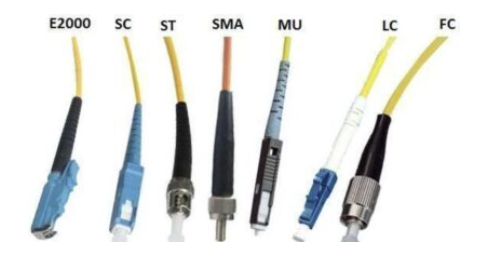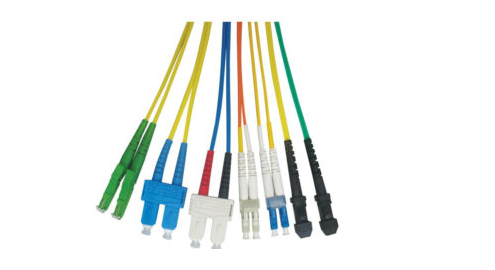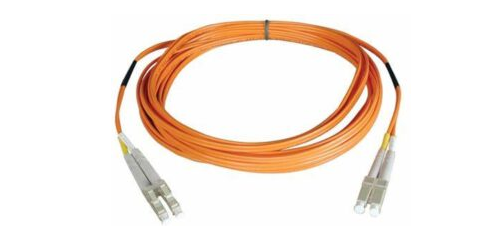1)By Optical connector:
LC fiber patch cable; FC patch cable; SC fiber cable; ST patch cable; MU fiber patch cable; MTRJ patch cord; E2000 patch cable; MPO fiber cable.
2)By fiber optic cable types
Single mode fiber optic cable: Generally in yellow color and useful for long transmission distance;
Multimode fiber optic cable: Generally the multimode patch cable are orange or gray and therefore are used for short distance transmission.
3)By fiber optic cable Jacket
PVC: Non-Flame Retardant;
LSZH : Low smoke zero halogen, Flame Retardant
Fiber optic connector type: LC, FC, SC, ST, MU, MTRJ, E2000,MPO
Ferrule Interface type: PC, UPC, APC
Fiber cores: Simplex, duplex, 4 fibers, 8 fibers etc.
Fiber type: Single mode (G.652, G655), multimode(50/125)/(62.5/125)
100% Insertion Return Loss, End Face and Interference inspection
Low insertion loss, high return loss
Excellent mechanical endurance
Insertion loss: <0.5 dB
Operation temperature: -20?? to 85??C
10G OM3 OM4 fiber cable available

According to the different modulus of the transmission point, optical fiber can be divided into single-mode fiber and multimode fiber.
The so-called “mode” refers to a beam of light entering the optical fiber at a certain angular speed. Single-mode fiber uses solid-state laser as the light source, and multimode fiber uses light-emitting diode as the light source. Multimode fibers allow multiple beams of light to travel simultaneously in the fiber, resulting in mode dispersion (because each “mode” light enters the fiber at a different angle and they arrive at the other endpoint at a different time, a feature called mode dispersion).
Therefore, the core of multimode fiber is thick, the transmission speed is low, the distance is short, and the overall transmission performance is poor, but its cost is relatively low, and it is generally used in buildings or geographically adjacent environments. Single-mode fiber can only allow a beam of light propagation, so single-mode fiber has no mode dispersion characteristics, therefore, the core of single-mode fiber is correspondingly thinner, transmission frequency bandwidth, large capacity, long transmission distance, but because it requires a laser source, the cost is higher.

Multimode fiber The optical signal in multimode fiber propagates through multiple paths; It is generally recommended to apply when the distance is less than a mile.
The effective distance from the transmitter to the receiver of multimode fiber is approximately 5 miles. The available follow-up is also affected by the type and quality of the transmit/receive device; The stronger the light source, the more sensitive the receiver and the farther the distance. Studies have shown that the bandwidth of multimode fiber is approximately 4000Mb/s。
Single-mode fiber is manufactured to eliminate pulse broadening. Due to the small core size (7-9 microns), light jumps are eliminated. Focused laser sources are used at 1310 and 1550nm wavelengths. These lasers shine directly into the tiny core and propagate to the receiver without noticeable jumps. If multimode can be compared to hunting, and many projectiles can be loaded into the barrel of a gun at the same time, then single-mode is a rifle, and a single light is like a bullet.

Single-mode fiber The thinning core of single-mode fiber allows light to be emitted directly to the center. Recommended for longer distances.
In addition, the distance loss of a single-mode signal is smaller than that of multimode. At the first 3000 feet, multimode fiber can be lost. Its LED has 50% of its optical signal strength, while singlemode loses only 6.25% of its laser signal at the same distance.
The bandwidth potential of singlemode makes it the only choice for high-speed and long-distance data transmission. Recent tests have shown that 64 channels of 40G Ethernet can be transmitted over a distance of up to 2,840 miles on a single-mode optical cable.
In safety applications, the most common deciding factor in choosing whether to be multimode or singlemode is distance. If there are only children’s miles, multimode is preferred because LED transmitters/receivers are much cheaper than the lasers required for singlemode. Single-mode fiber is best if the distance is greater than 5 miles. Another issue to consider is bandwidth; If future applications may include the transmission of large bandwidth data signals, then single-mode would be the best choice.